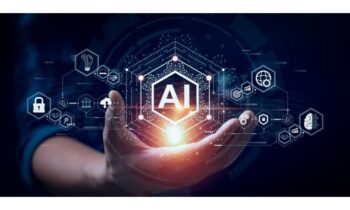The relationship between the police and the public… well, it’s complicated. As humans, we are inclined to look up to authority figures to make us feel protected and safe, someone willing to fight for us. But what happens when these leaders and bodies fail to protect us and cause us harm? If there is a divide between law enforcement and the public, chaos will ensue.
But is the situation black and white? Or is there somewhere the two parties can meet and sort things out? The time is nigh for some rational solutions.
Mutual consensus
There are always two sides to every story. Before we move to the solutions, we need to understand the obstacles hindering the United States and Law Enforcement from being on the same page.
- We, the people
The people make a country. In 2018, the average American filed $15,322 in taxes. A democratic nation, where people elect leaders and pay their due diligence in return for a comfortable and nurturing environment to reside in, is bound to have people raise concerns over governance. It is a difficult position to be in, knowing that at any given moment, at any given time, this so-called nurturing environment can go rogue. The U.S. Law Enforcement system has made its bed when it comes to earning a bad reputation on the streets. Between 1980-2018 America has had approximately 30,000 deaths caused from police violence with over 55% of deaths going unreported. The demise of George Floyd, Breonna Taylor, Ahmaud Arber, and many others have become evidence that racism exists in law enforcement.
- Law Enforcement
The crime rate has risen exponentially throughout the course of the years. This factor alone, mixed with the scarcity of well-trained police officers, has led to law enforcement departments being moth-eaten. There needs to be supply to meet demand. Police officers are overburdened with work, leading to less productivity and demotivation. Amid the George Floyd protests, law enforcement has become one of the least popular institutions to apply for a job. The overall stigma toward police officers makes it difficult to find a solution.
Let’s talk
An argument has no substance if both parties are not heading towards a particular goal. Having learned the gist of problems faced by the public and police, here are some of the viable solutions that can bring the two parties on the same page:
- Aware over beware:
The police are demonized in this day and age. Murders of police officers have risen by nearly 60% during 2021. Though, you probably didn’t know that. It is easy to overlook and condemn those in authority because we expect too much from them. There is a need to organize awareness campaigns for violence against the police. An individual, potentially looking to dawn the navy uniform, shouldn’t feel afraid of the people he is promising to protect.
- Police pay gap:
St. Louis County is an example of the police-pay gap. The very individuals expected to fulfill the role of paramedics, therapists, and, of course, the police force is paid minimum wage. Police officers around parts of St. Louis County earn less than $16/hour, which is demoralizing. There needs to be facilitation by the government to motivate law enforcement to give their all to the cause.
- Monitoring:
A thorough background check should be devised to make sure each individual looking to recruit in the police is mentally and physically competent to handle pressure situations. To ensure better quality arrests and greater public satisfaction, the government must invest in police surveillance. A rogue police officer will think twice before even applying for an institution tightly packed with their security. - Better protocol:
Needless to say that the police have performed poorly in maintaining a healthy reputation for U.S. law enforcement. But there is always an opportunity for redemption and room for improvement. A complete reassessment of police protocol should be devised. The federal government should vouch for streamlining the policy framework, use of force training, and internal investigations.
- State Intervention:
The State legislatures can eliminate the bottlenecks faced in law enforcement, speeding up the advancements. State Law is more liberal than the Fourth Amendment doctrines providing lesser protection to individuals. The Fourth Amendment can easily be misused, therefore calling for judicial reviews that scrutinize the seizure of persons and property for constitutional consistency or that which is inconsistent or out-of-line.
On the same page
Mutual consensus in a democratic nation is difficult to achieve, but not impossible. We as a society are at a point where we should set our foot down for a better future. Let’s lift each other, listening, acting, and persevering for a better tomorrow. The law ultimately is in our own hands.
To learn more ideas on how to better our law enforcement issues and tackle the division of law enforcement among the people of America, check out James Buie’s latest book on Amazon. Let’s come together and rebuild our system From the Ground Up.



